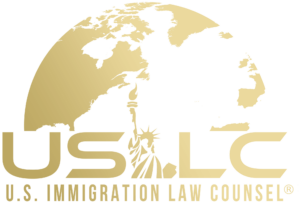If you want to come to the United States with an employment-based visa, your employer will most likely need to get PERM labor certification. This is something that is required for the majority of employment-based visas, and it can create some challenges in the immigration process. Because of this, you and your employer should take the additional step of hiring a PERM attorney to assist with a certification process. Here is everything you need to know about the PERM processing time for 2025 and how this can impact your ability to get an employment-based green card.
Why PERM Is Required for Most Employment-Based Visas
Before we get into the PERM application timeline, what exactly is PERM labor certification? The permanent labor certification program is something that is required when an employer wants to sponsor a foreign worker. The purpose of this certification is to assess whether or not granting the foreign worker a visa would prevent an equally capable U.S. citizen worker from being hired for the same job.
Although it can be a confusing and time-consuming process, PERM labor certification is essential for safeguarding the working conditions and wages of U.S. workers.
When an employer is looking to sponsor a foreign worker, they must obtain PERM certification before they can submit a petition for an employment-based visa. Only once they have been approved and received their PERM certification can they move forward to filing form I-140, which is the immigrant petition for alien workers.
PERM labor certification is required for the majority of EB-2 and EB-3 employment-based green cards with the exception of the EB-2 NIW visa.
PERM Filing Requirements
To begin the process of obtaining PERM certification, employers need to file the application for permanent employment certification. Keep in mind that before this step is ever taken, employers have to conduct certain recruitment steps beforehand to show that there are no U.S. citizen workers available to fill the position.
Here are additional requirements you must meet for this certification:
- The job listing has been made available to U.S. workers.
- The employer must have a prevailing wage determination.
- The employer can add the employee to their payroll before or on the day of their arrival.
- The employer and the foreign worker are not the same person.
- The position is full-time and permanent.
- The decided wages are not dependent on financial incentives, commissions, or bonuses.
- The working conditions and terms of employment meet federal, state, and local legal standards.
- The employer did not discriminate against employees based on sex, race, religion, age, creed, nationality, disability, citizenship, or color.
- The employer has the financial means to pay the promised wages.
- The position did not become available due to labor stoppage or strikes.
When filing the form for PERM certification either through mail or online, the employer will also need to provide some basic business details, such as:
- Total number of employees
- The year the business was started
- Full legal name and address of business main office or head
- Contact information for the business
- The North American Industry Classification System code
- The employer’s nine-digit EIN
Typical Processing Times in 2025
Before proceeding with PERM labor certification, it’s important to understand that there is no strict processing time for 2025. Although there are some average processing times, this is going to be very dependent on each individual case. For instance, how long this process takes can be impacted by how complex the case is, whether or not you run into any PERM delays, and how many other employers are going through certification.
That being said, here are some estimated processing times that have been updated for 2025:
- Prevailing wage determination: Between 5 and 8 months.
- Recruitment process: Between 2 and 3 months.
- PERM filing and processing: Between 8 and 12 months.
Also, if you are audited, this can take an additional 6 months or longer.
Although there isn’t necessarily a way of speeding up this process, there are some strategies you can use to avoid running into any delays. The main thing to keep in mind is that all of the information you provide needs to be accurate and free of errors. Even the smallest error can result in a delay, which can slow the entire process down by months.
Your employer also needs to keep complete recruitment documentation that tracks things like interview notes, recruitment efforts, and job postings.
What Happens After PERM Approval?
When your employer has obtained PERM labor certification successfully, they can move forward with petitioning for a green card. To start this process, they first need to file form I-140 and wait for it to process, which can take 6 to 12 months.
When a visa number becomes available, you’ll then need to file for adjustment of status or consular processing depending on whether you are in the U.S. or abroad. This process will take an additional 6 to 12 months.
Another thing to keep in mind is that it is essential that you hire a PERM attorney before ever starting this process. The entire process of obtaining an employment-based visa can be quite complex and there is a lot of room for error. An attorney will work with you throughout every step, ensuring it is done correctly and with the best chance of approval.
Hire an immigration Attorney Today
Do you want to come to the United States with an employment-based green card? Contact us today at U.S. Immigration Law Counsel at 800-666-4996 to speak with an immigration attorney about your situation. We will deal with the government, so you don’t have to!
FAQ:
How long does the PERM process usually take in 2025?
The total PERM processing time for 2025 is estimated to be between 13 and 24 months if no audit is done.
Can an employer start the green card process without PERM?
Your employer can only begin the green card process without PERM labor certification if you meet the requirements for the special exception provided in the EB-2 category.
What are common reasons for PERM denial?
PERM applications are commonly denied due to documentation errors, inaccuracies, a lack of evidence, fraud, and recruitment process errors.




